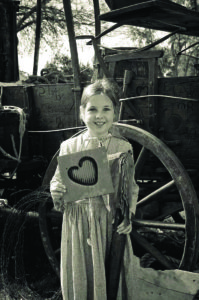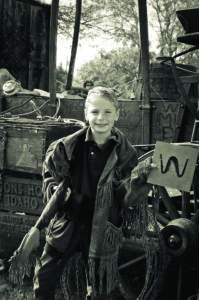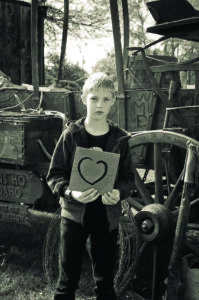An entire generation of Idaho fourth-graders have a real hands-on experience understanding how pioneers lived: They’ve been through Wagons Ho.

Photo courtesy Zion Lutheran School
Now in its 27th year, Wagons Ho is produced by Marla and Cal Clevenger, of Caldwell. They bring in a wagon and supplies to teach children how to perform tasks like washing clothes, making butter, lassoing and branding “cattle,” and using tools. Typically, it’s during fourth grade, when schoolchildren study Idaho history.
“Kids are expected to work hard, behave like pioneer children, and they absolutely love it,” said Tara Leach, who teaches at Riverside in east Boise, which has done the program since 1992. Up to 50 parent volunteers work with the Clevengers and teachers to keep little pioneers on track and safe.
“Hands-on is always better than showing or telling,” said Dan Blitman, who teaches at Silver Trail Elementary in Kuna, a school that has participated in the program for at least 10 years. “Kids get an appreciation of just how hard things were and that they have it pretty easy now.”
Not surprisingly, Wagons Ho started with a restored wagon, Marla Clevenger said. “We used it as a prop for our sign business,” she recalled. They took it to events like Murphy Days and Caldwell’s Frontier Days and did Dutch oven cook-offs. “People began to be more interested in what we had cooking, where the wagon came from, and the things on it,” she said, including their three-decade “dust and rust” collection of tools and cooking equipment.
Then the Clevengers thought about expanding. “We saw what our own kids were interested in,” and that was hands-on activities, she said. So, they put out a flyer and called schools to offer their services. Now, they produce between 30 and 60 programs annually, typically in spring and fall, teaching more than 6,000 children per year.

Photo courtesy Zion Lutheran School
The program costs $10 to $15 per student. “It’s about $1,400 for a school as big as ours,” about 130 students, Leach said. “It’s worth every penny.” For larger schools, Wagons Ho visits the school and sets up shop in a field. With smaller schools, several might get together and do the Wagons Ho
program in a park. The program is also sometimes performed at community events, such as Ketchum’s Wagon Days.
“The kids really look forward to Wagons Ho!” said Lisa Enourato, assistant city administrator for the City of Ketchum. “They work so well with the children and their program fits perfectly into our historical celebration of Ketchum during Wagon Days. We look forward to having them back each year.”
At this point, Wagons Ho is teaching a new generation of students, Marla said. “The fourth-grade students, some of those people are now teaching fourth grade,” she said. “The fourth-grade students are bringing their fourth-grade students.”

Photo courtesy Zion Lutheran School
The Clevengers’ children aren’t available to take over the Wagons Ho program, though their son helps with setup and maintenance. But they don’t have any plans to retire. “It’s very rewarding, even though we’re not the same age as when we started,” she said. “It’s not as easy for us to do the program now.”
But the response from the kids and the communities is what motivates them to keep going. “Very rarely do we go into a restaurant or store where the people working there don’t know us,” Cal said. How long does he plan to continue producing Wagons Ho? “’Till we kick the bucket!”
